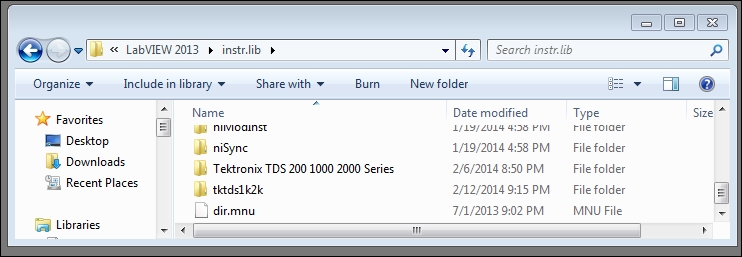Next, we need to make sure that software drivers are correctly installed in LabVIEW for the correct model of the instrument we have: the oscilloscope. Some vendors provide the software in the box with the hardware sold. Otherwise, a little search on the NI site will do the job. Usually, there are two flavors of the drivers for these devices: "Plug and Play" as well as "Plug and play (project style)". Complete and detailed installation is also available on the NI site. Note the path and two versions of the drivers installed. This is for demo and installation of both versions, while perfectly OK but not necessary useful. Note that if you are planning on making an application with an installer out of your VI(s), all drivers and non LabVIEW standard functions need to be included in the process of creating an installer for the application:

Once the software has installed properly, it will appear on your functions plug when you click on the Block...



